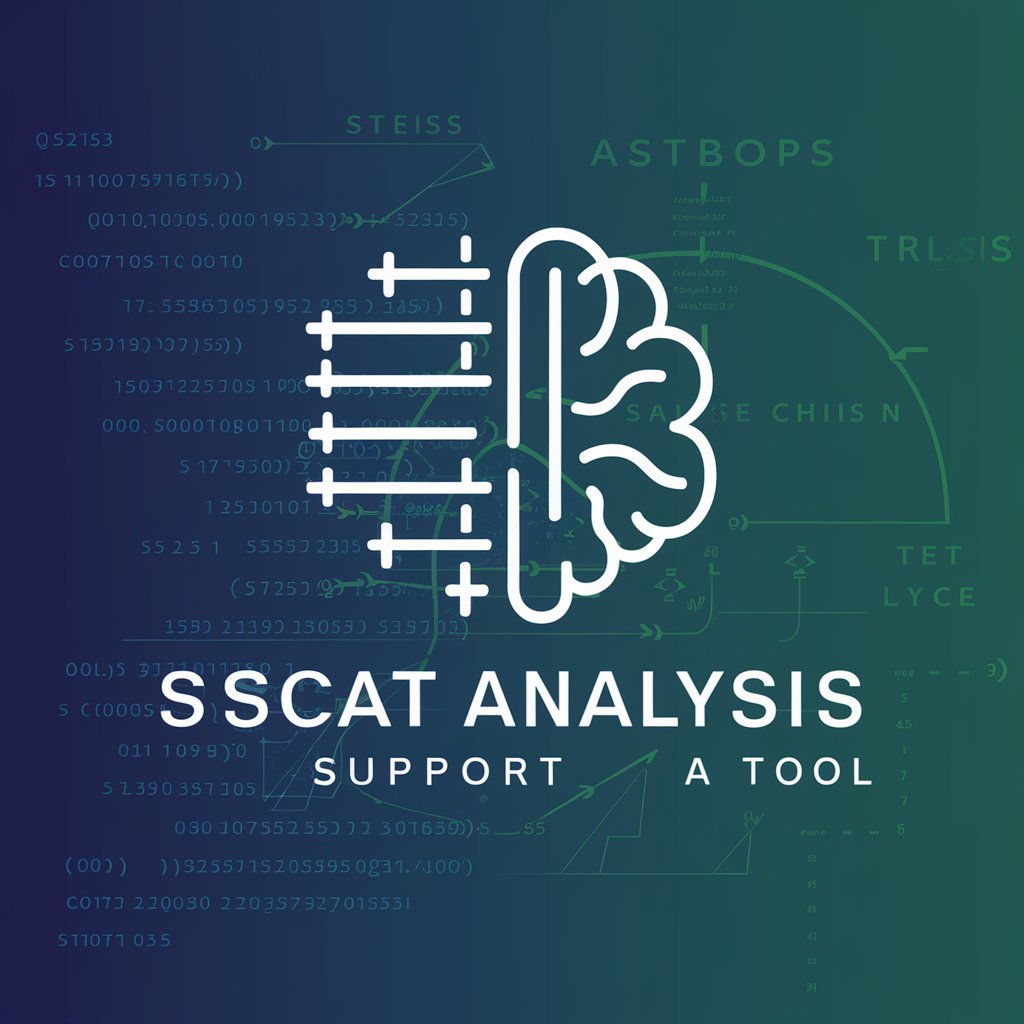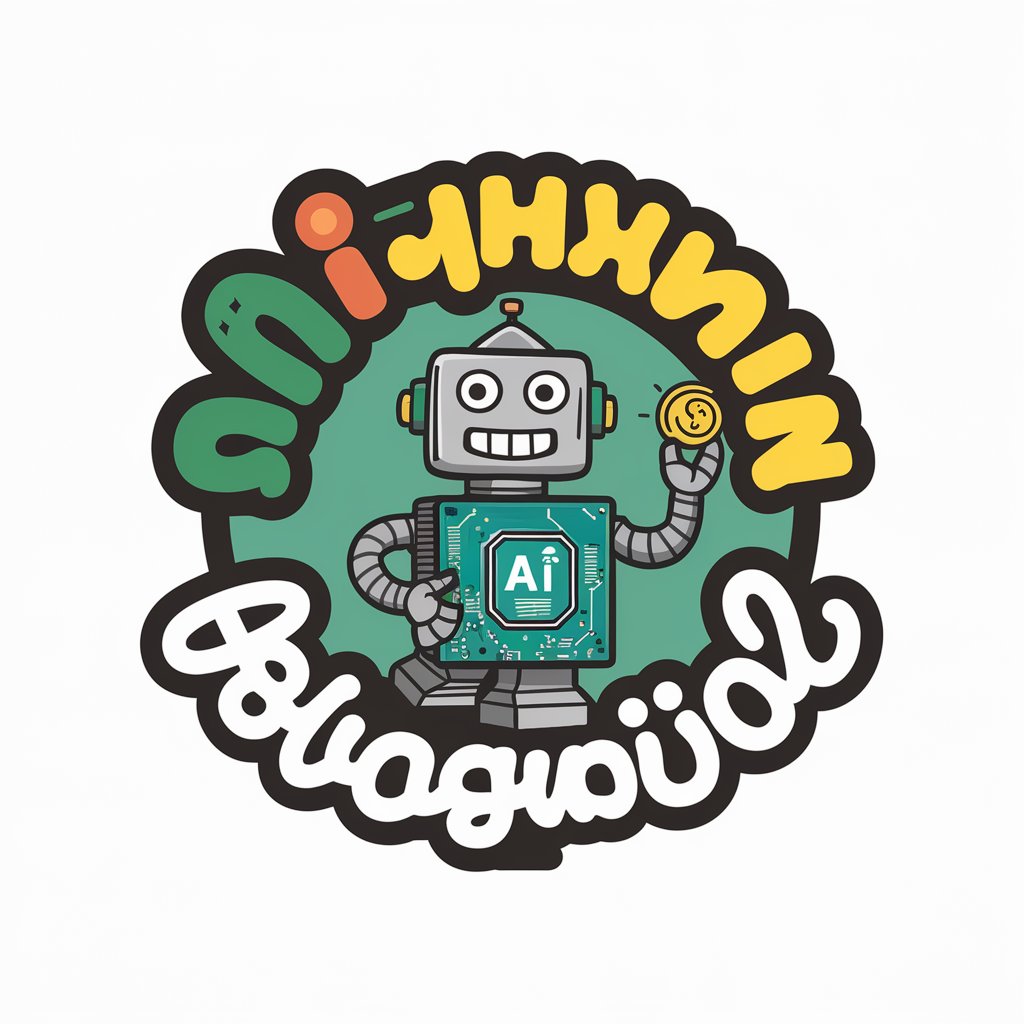
質的研究:SCAT分析専用API - SCAT Analysis Tool

Welcome to SCAT Analysis Support!
AI-powered insight from qualitative data
What are the essential steps in the SCAT analysis process?
How can SCAT be applied to small-scale qualitative data?
Explain the significance of coding in SCAT methodology.
Describe the process of theorization in SCAT analysis.
Get Embed Code
Introduction to Qualitative Research: SCAT Analysis API
The Qualitative Research: SCAT Analysis API is designed to assist researchers and practitioners in performing SCAT (Steps for Coding and Theorization), a method for analyzing qualitative data. Developed with the aim of facilitating easier entry into qualitative research, especially for those dealing with small-scale data or seeking to apply a structured approach to theory-building from textual or verbal data, this API supports users through the process of coding and theorizing. For example, a user studying the impact of educational reforms might use the API to analyze interview transcripts, identifying key phrases, rephrasing them, explaining their significance, and deriving themes or theoretical constructs. Powered by ChatGPT-4o。

Main Functions of SCAT Analysis API
Segmentation and Coding
Example
Automatically segmenting textual data into analyzable units and assisting users in coding significant phrases.
Scenario
A social scientist analyzing interviews about community responses to a new policy could use the API to break down responses into segments and code significant phrases, facilitating deeper analysis.
Rephrasing and Explanation
Example
Helping users to find alternative expressions for coded phrases and to explain their relevance within the study context.
Scenario
An educational researcher could rephrase terms used by students to describe online learning experiences and explain these in the context of learning theories.
Theme Identification and Theorization
Example
Assisting in identifying themes from coded data and in developing a theoretical narrative or storyline.
Scenario
A healthcare professional researching patient satisfaction might identify themes such as 'communication' and 'trust', using the API to theorize how these factors influence patient experience.
Ideal Users of SCAT Analysis API Services
Academic Researchers
Scholars in fields like sociology, psychology, and education who require structured qualitative analysis tools for their research projects, particularly those working with interview transcripts, field notes, or open-ended survey responses.
Students in Qualitative Research Courses
Undergraduate and graduate students learning about qualitative research methods who need hands-on tools to apply theory to practice, enabling them to analyze data for theses or course projects.
Market Researchers
Professionals conducting focus groups, interviews, or analyzing customer feedback to inform product development, marketing strategies, or user experience improvements.
Policy Analysts
Analysts evaluating public opinion on policy issues or assessing the impact of policy implementations through interviews, focus groups, or public consultations.

Using Qualitative Research: SCAT Analysis API
Begin Your Journey
Start by visiting yeschat.ai to initiate your free trial effortlessly, no login or ChatGPT Plus subscription required.
Explore Documentation
Familiarize yourself with our comprehensive documentation to understand the API's capabilities, including input formats, analysis parameters, and output interpretations.
Prepare Your Data
Organize your qualitative data, ensuring it's in a clean, readable format. This could include interview transcripts, observational notes, or open-ended survey responses.
Execute Analysis
Use the API to submit your data for SCAT analysis. This involves coding your data through the API's interface and receiving structured insights and theoretical codifications.
Review and Apply Insights
Examine the analyzed output for patterns, themes, and theoretical constructs. Apply these insights to your research, policy development, educational practices, or other relevant applications.
Try other advanced and practical GPTs
System Security Expert 系统安全专家
Empowering cybersecurity with AI-driven insights

Game: Survivor's Tale/游戏:丧尸中求生
Survive the apocalypse with AI-powered storytelling.

Tease the Boss 调戏领导
Tease the Boss: Where AI Gets Playful

WV Legal Companion
Empowering Legal Discovery with AI

物理の優しい先生
Master Physics with AI

喵喵屋
Empowering cat owners with AI-driven insights.

学习鸭
Empowering English learning with AI

梦境分析师
Unravel Your Dreams with AI-Powered Insights

AIフリップ大喜利
Bringing AI to the Art of Laughter

なんでも大喜利さん
Elevating Conversations with AI-Driven Humor

Math Mentor XL
Solve, Learn, and Excel with AI-Powered Math Tutoring

民法大模型
Empowering legal decisions with AI

FAQs about Qualitative Research: SCAT Analysis API
What is SCAT Analysis?
SCAT (Steps for Coding and Theorization) is a methodical approach for analyzing qualitative data, focusing on identifying key phrases, rephrasing with external vocabulary, explaining with phrases, and constructing themes or theoretical concepts from data.
Who can benefit from using this API?
Researchers, educators, policy analysts, and social scientists seeking to draw meaningful insights from qualitative data will find this tool invaluable for their analytical work.
How does the API improve the analysis process?
The API streamlines the SCAT analysis by automating the coding and theorization steps, enabling users to process large volumes of data efficiently and derive actionable insights more quickly.
Can I use the API for analyzing data in languages other than English?
Yes, while the primary interface is in English, the API is designed to handle qualitative data in multiple languages, though accuracy might vary depending on the language's complexity and available resources.
What kind of support is available for API users?
Users have access to comprehensive documentation, a user-friendly interface for easy navigation, and customer support for technical queries and operational assistance.




